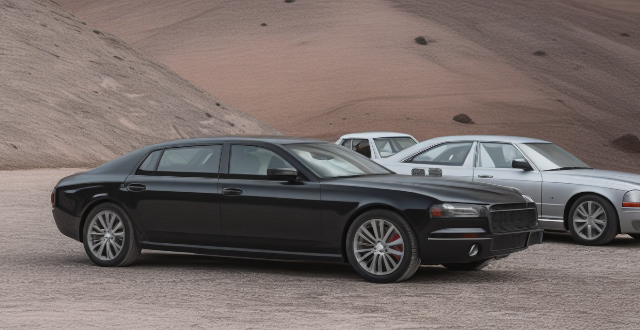Ride-sharing services have significantly impacted car sales by reducing demand for new vehicles, prompting changes in vehicle type and design, and leading automakers to focus more on mobility services.

Impact of Ride-Sharing Services on Car Sales
Introduction
Ride-sharing services, such as Uber and Lyft, have revolutionized the way people travel. These services allow individuals to book a ride through an app on their smartphone, making it easy and convenient to get around without owning a car. As a result, there has been a significant impact on car sales. In this article, we will discuss the various ways in which ride-sharing services have affected the automotive industry.
Decreased Demand for New Cars
One of the most obvious impacts of ride-sharing services is the decreased demand for new cars. With more people using ride-sharing services instead of owning a car, there is less incentive for individuals to purchase a vehicle. This has led to a decline in car sales, particularly among younger generations who are more likely to use these services.
Key Points:
- Decreased Demand: Ride-sharing services have made it easier for people to get around without owning a car, leading to a decrease in demand for new vehicles.
- Generational Shift: Younger generations are more likely to use ride-sharing services, reducing their need for personal transportation.
Changes in Vehicle Type and Design
As ride-sharing services become more popular, automakers are starting to rethink the types of vehicles they produce. Many companies are now focusing on designing smaller, more fuel-efficient vehicles that are better suited for urban environments where ride-sharing services are most commonly used. Additionally, some manufacturers are exploring the development of autonomous vehicles, which could further disrupt the traditional model of car ownership.
Key Points:
- Vehicle Type: Automakers are shifting towards producing smaller, more fuel-efficient vehicles that cater to the needs of ride-sharing services.
- Autonomous Vehicles: The development of self-driving cars could lead to even greater changes in the automotive industry, potentially reducing the need for human drivers in ride-sharing services.
Increased Focus on Mobility Services
In response to the rise of ride-sharing services, some automakers are expanding their business models beyond just selling cars. They are now offering mobility services, such as car sharing and subscription programs, to provide customers with flexible transportation options. This shift towards mobility services allows automakers to adapt to changing consumer preferences and maintain revenue streams in a rapidly evolving market.
Key Points:
- Mobility Services: Automakers are diversifying their business models by offering mobility services like car sharing and subscription programs.
- Adapting to Change: By embracing mobility services, automakers can better compete with ride-sharing companies and meet the demands of modern consumers.
Conclusion
The emergence of ride-sharing services has had a significant impact on car sales, leading to decreased demand for new vehicles, changes in vehicle type and design, and increased focus on mobility services by automakers. As these trends continue to shape the automotive industry, it will be essential for both traditional car manufacturers and ride-sharing companies to adapt and innovate in order to remain competitive in the future.